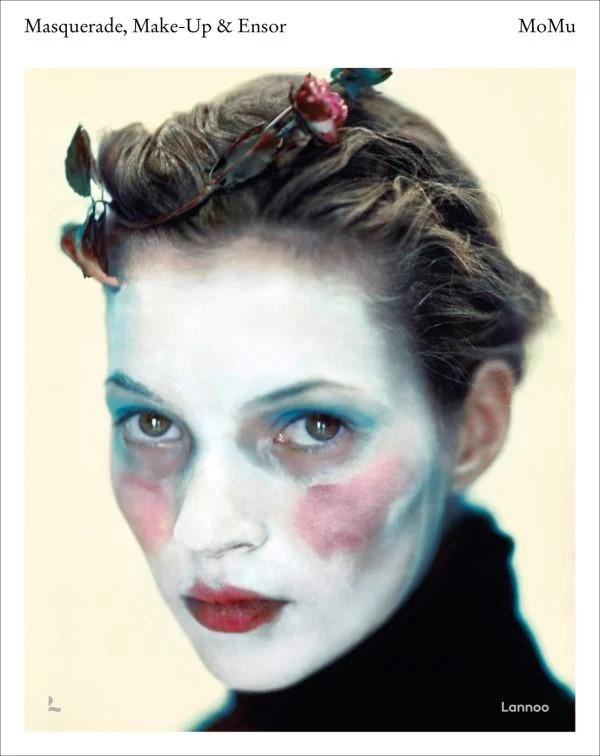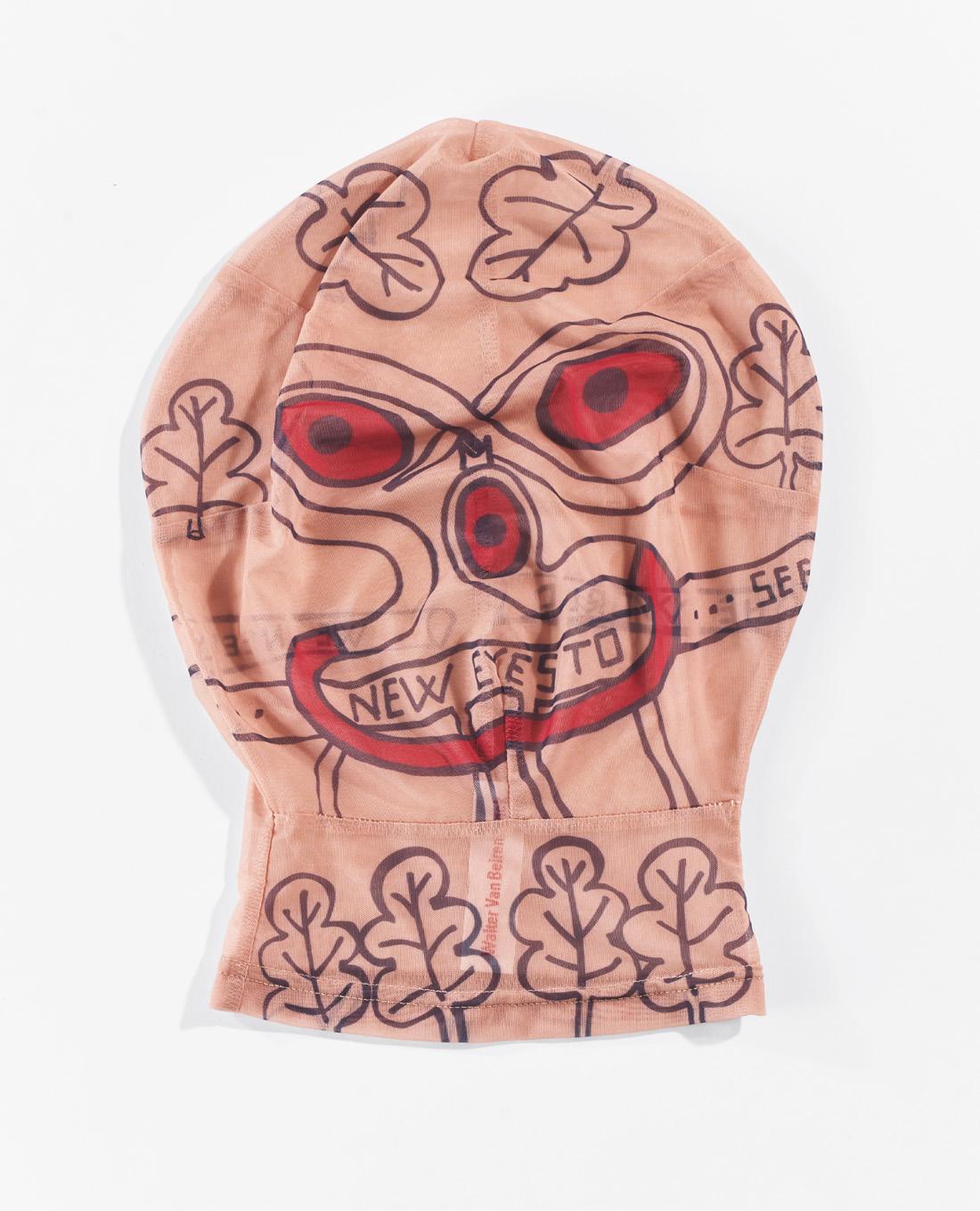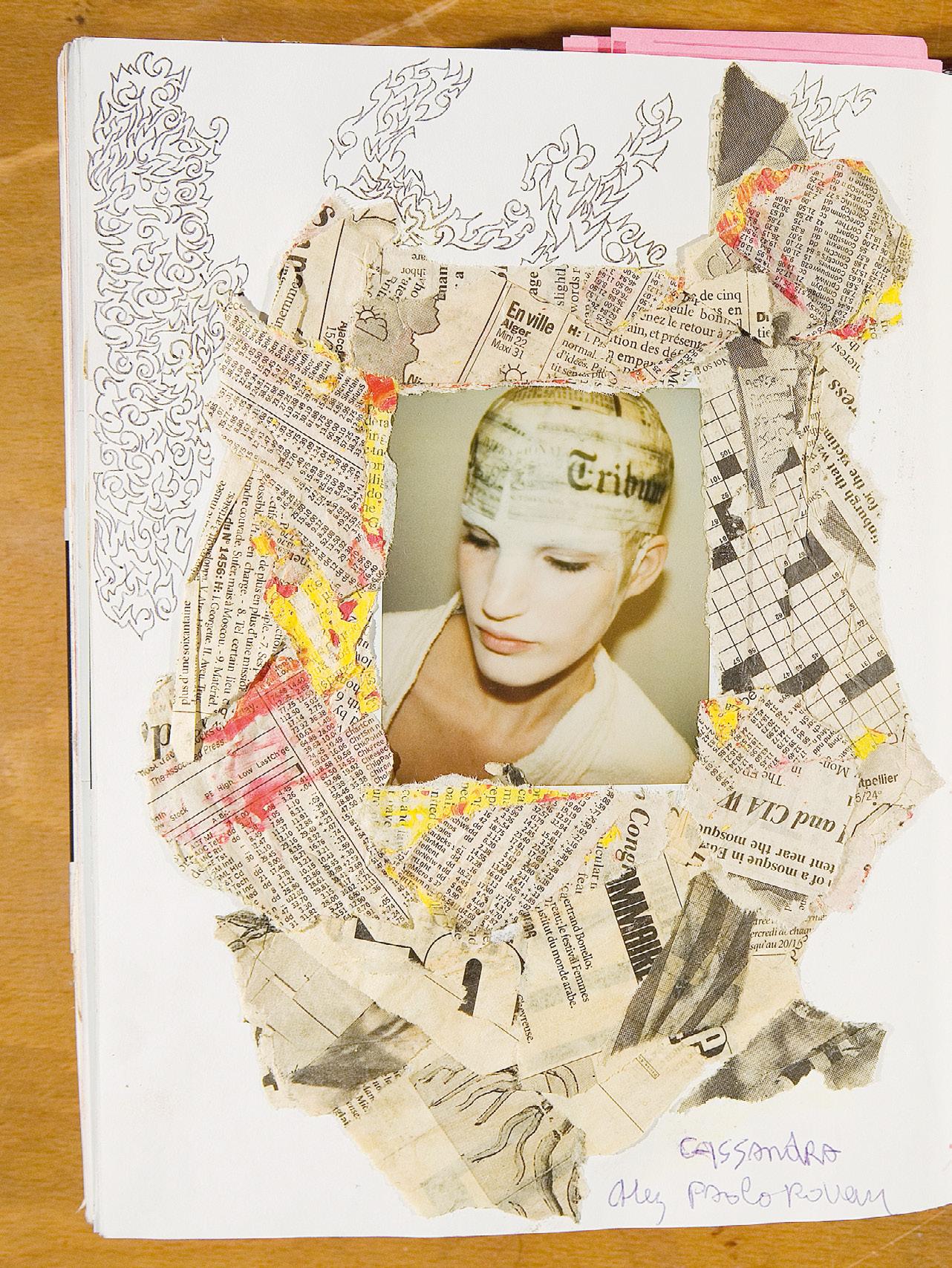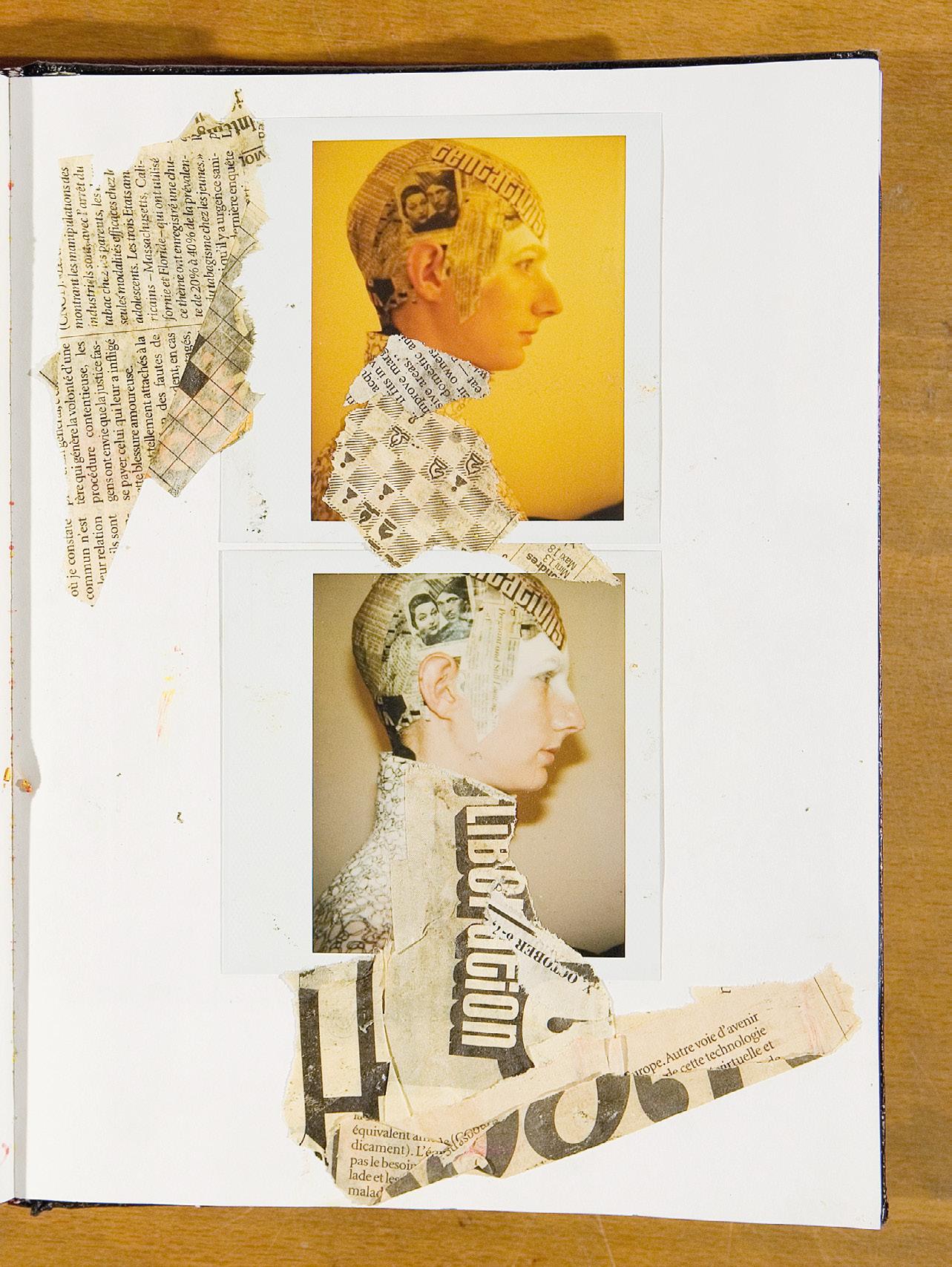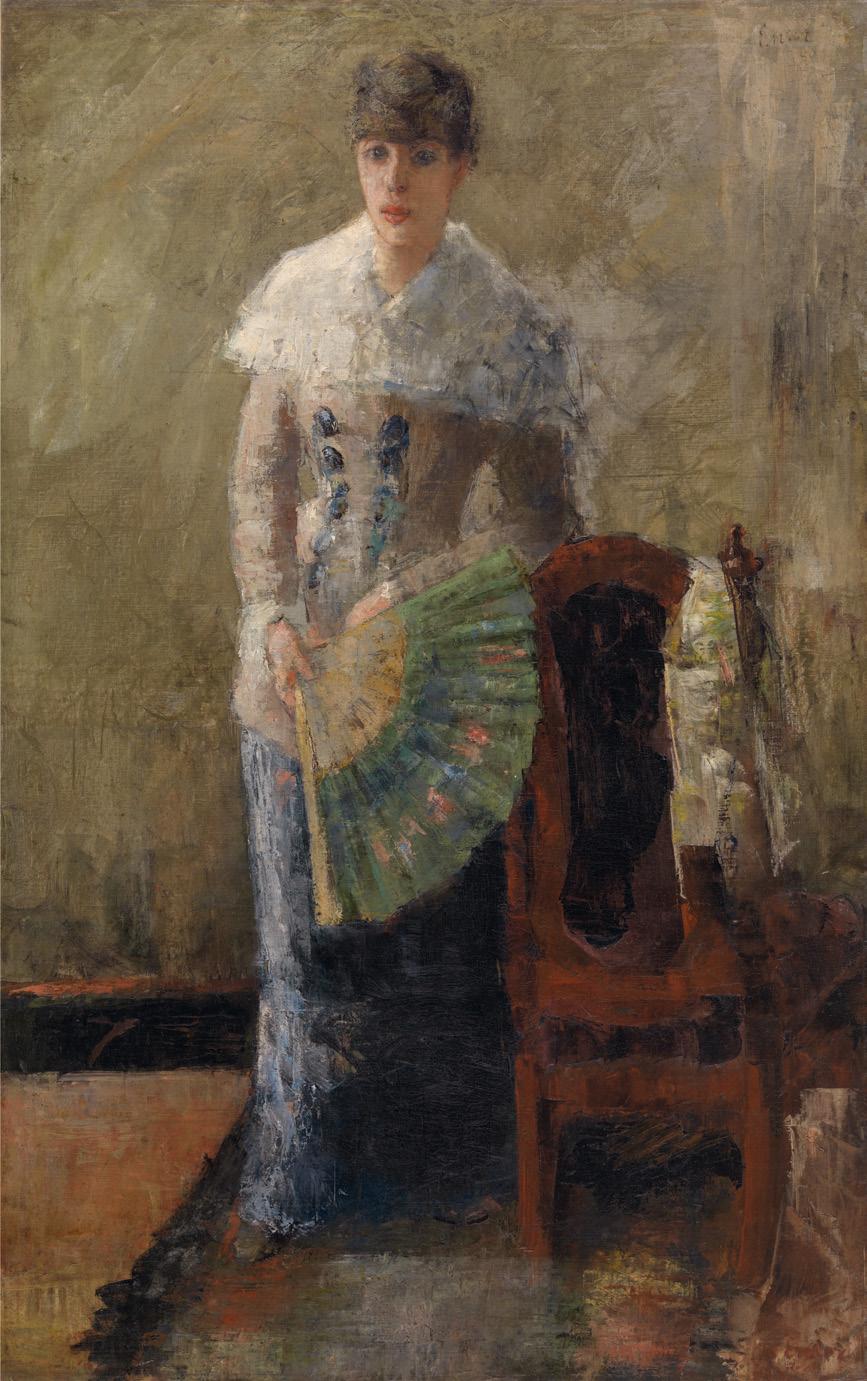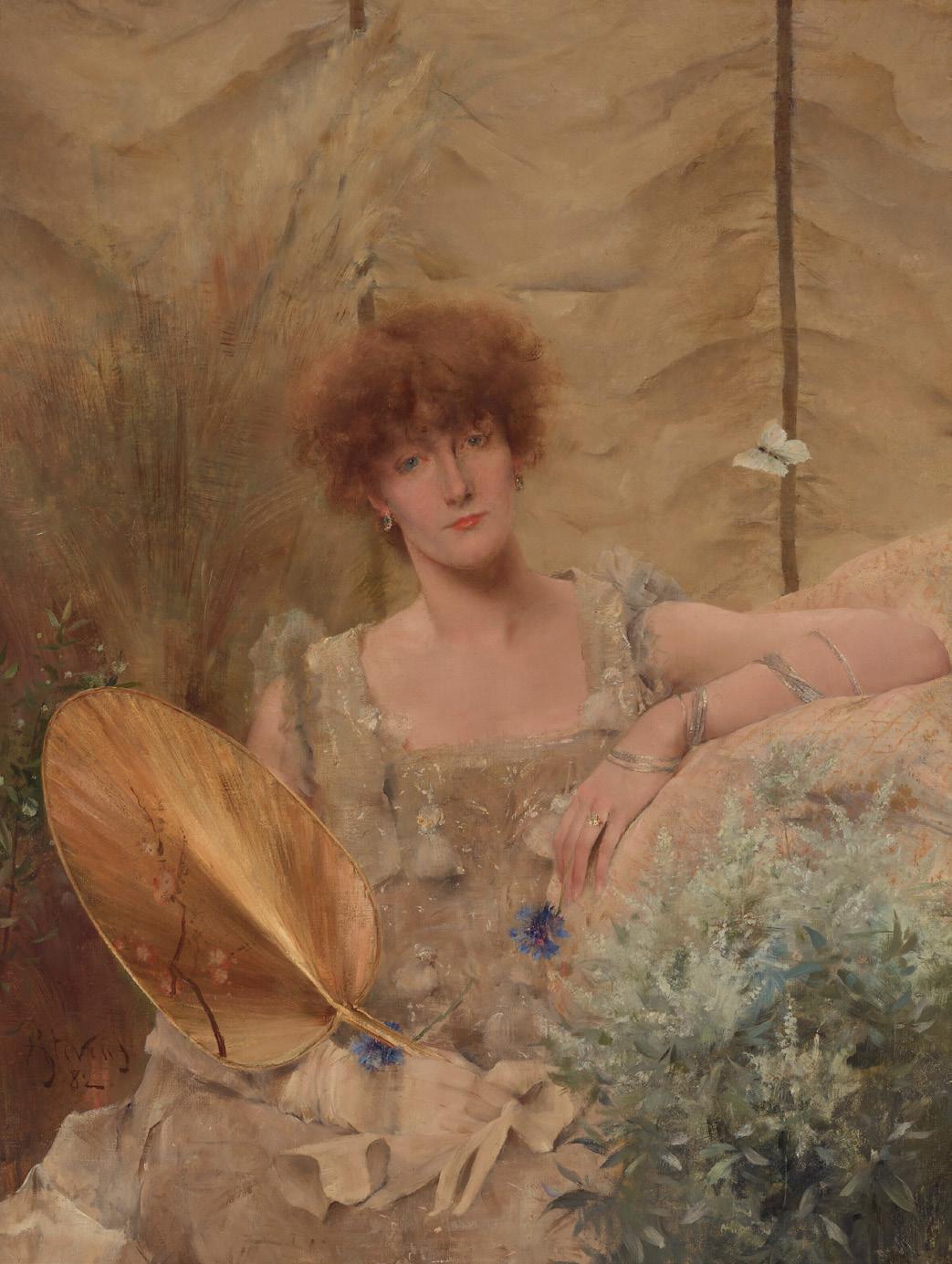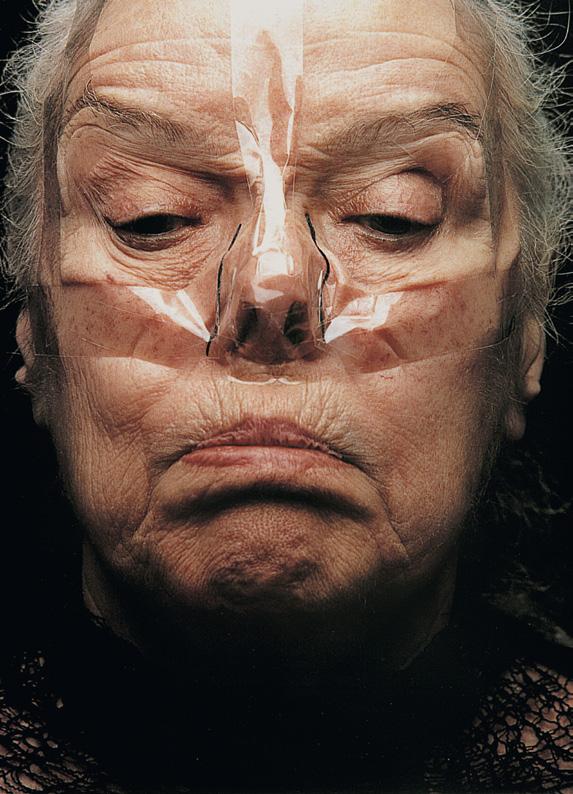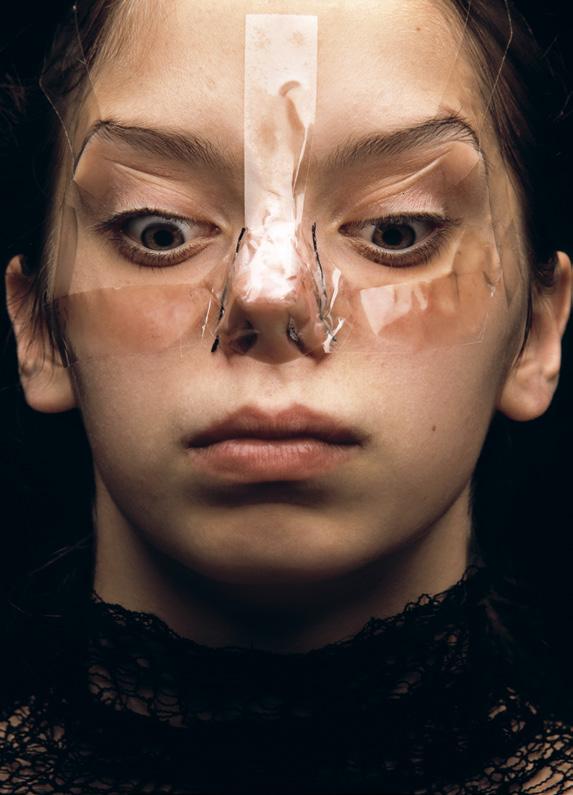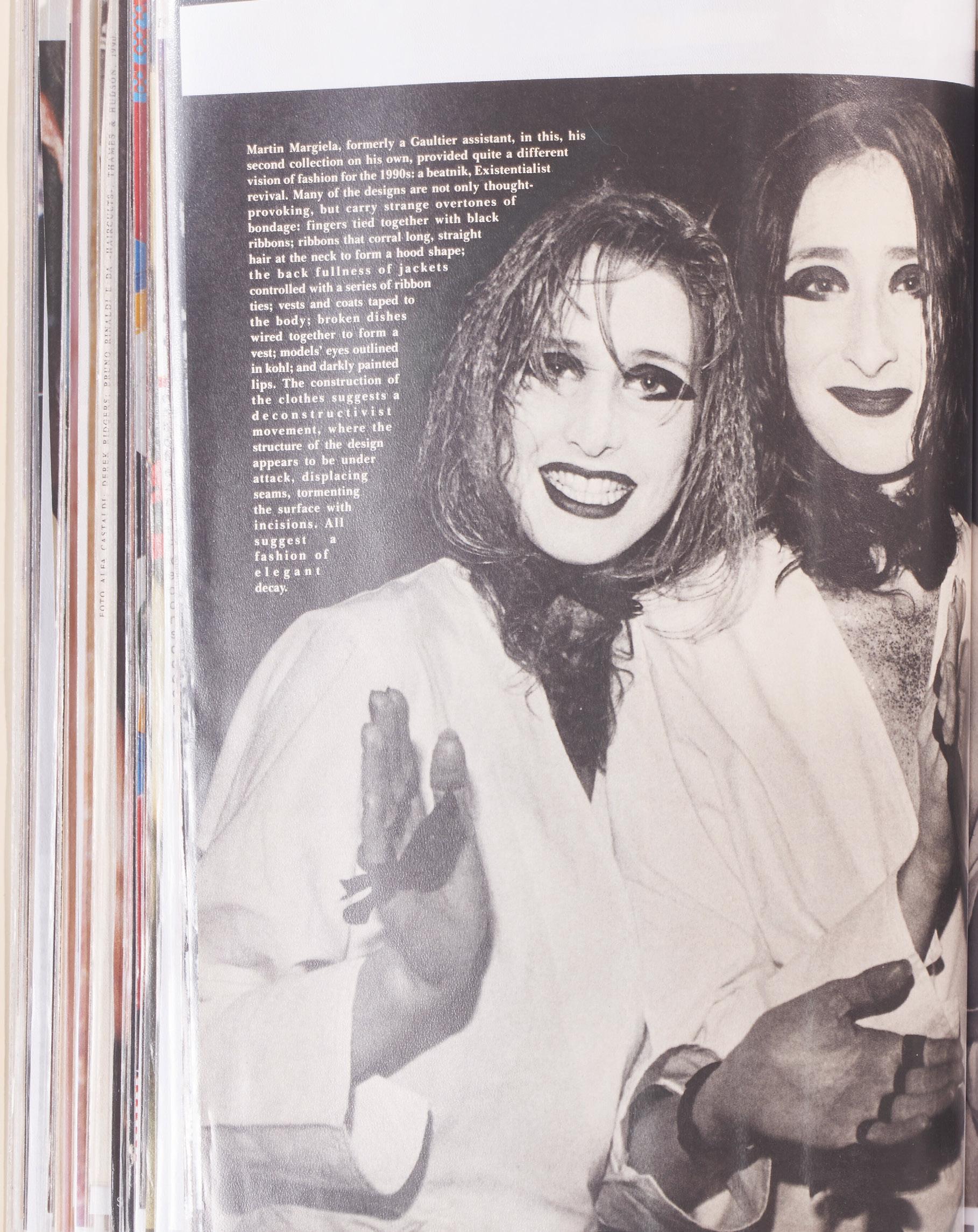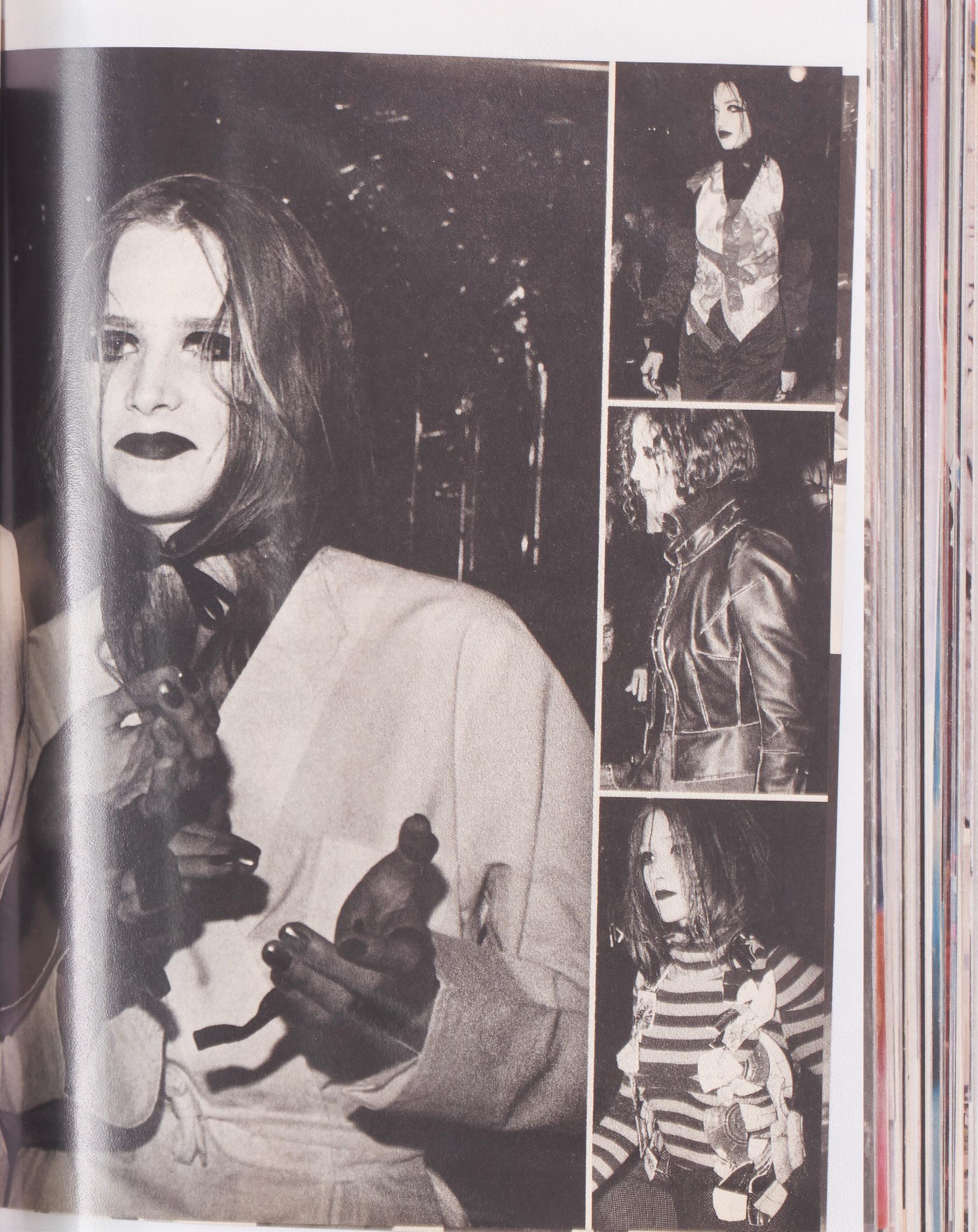Walter Van Beirendonck, Autumn-Winter 2023-2024.
kaat debo
Director MoMu - Fashion Museum Antwerp
With the exhibition Masquerade, Make-up & Ensor, MoMu –Fashion Museum Antwerp is taking part in an ambitious city festival in the autumn of 2024. With ‘Ensor 2024’, no fewer than four museums are putting the work of avant-garde Belgian painter and printmaker James Ensor (1860-1949) centre stage: MoMu, the Royal Museum of Fine Arts Antwerp (KMSKA), the Plantin-Moretus Museum, and FOMU – Photo Museum Antwerp. That Ensor’s oeuvre is being illuminated not only from a fine arts perspective, but also from that of applied arts such as fashion and photography, is in line with a transdisciplinary exhibition approach that MoMu has been exploring for some time.
In Masquerade, Make-up & Ensor , we examine how Ensor’s ideas on masquerade, (false) coquetry, seduction, deception, the artificial and the ephemeral can resonate with a contemporary audience more than a century after his time. Our exploration leads us to universal human themes, from the fear of visible ageing to the pursuit of unattainable beauty ideals. The ambiguous masked beings in Ensor’s work can be read as a sharp indictment of the hypocrisy of the bourgeoisie in his day. These beings expose insecurities as well as the opportunism and increasing consumerism of his contemporaries. Even today, make-up and cosmetics are carriers of very ambiguous narratives. They are masks behind which humans anxiously hide their transience and insecurity, but they are also an inexhaustible source of self-expression and artistic inventiveness.
The exhibition and accompanying publication celebrate the painters of fashion: the make-up and hair artists who leave an unmistakable mark on the image of fashion and the beauty ideals of their time, artists who often operate in the shadow of the designer or creative director of a fashion house. Light, colour, material and tactility are, as with Ensor, the ingredients for both artistic experimentation and social commentary.
Inge Grognard. Captured and directed by Casper Sejersen, 2024.
A film commissioned by MoMu – Fashion Museum Antwerp, artistic direction by Beauty Papers
James Ensor, Masks Confronting Death, 1888.
I Like Charles Baudelaire in his 1863 essay on cosmetics, Ensor associated make-up with modernity, beauty, fashion and display. Paintings from the 1880s like Lady with the Fan (1880, p. 90) or Lady with a Red Parasol (1880, p. 88) focus attention on the public appearance of the modern middle-class woman while also showing off Ensor’s ability to make visible the sensual materiality of contemporary experience. In Old Lady with Masks (also known as Theatre of Masks or Bouquet d’Artifice) (1889, p. 240) he engaged with current discourse on make-up and its potential for disguise, deception and aggrandisement. In this work an older woman with a wrinkled brow, her head crowned with flowers and wearing earrings, looks out as if seeing herself from her reflection in a mirror. Her face, a pastiche of white makeup, rouged lips, two beauty marks and facial hair, is surrounded by large and small masks, several Carnival figures and a skull. Comparing contrived and grotesque forms and faces, Ensor accented the painting’s underlying artifice with masks and the cosmetic enhancements of maquillage fashioning a portrait that conceals identity even as it tempers any ideal of beauty with the variances of time and ageing.
In other works, Ensor laid out these same accoutrements of the welldressed woman – hats and shawls, fashionable dresses and jackets, umbrellas and fans – as still-life arrangements that focus attention on the allure and travesty of material culture. In Masks Confronting Death (1888, p. 34) a skull wrapped in a white cloth and wearing a fashionable hat grins from its central position where it is surrounded by masks cloaked with shawls and pieces of cloth, or adorned with blue leaf-like trim or hats. Nearby, another figure with a masked or made-up face, clothed in a peignoir and nightcap and wearing blue glasses, looks towards the skull. Gathered together, this ensemble of skulls, masks, clothing and hats demonstrates Ensor’s ability to describe tactile patterns and surfaces with ease and to model form in natural light. Set against a mirror-like background that suggests a deep hazy atmospheric space, Ensor’s painterly evocation confronts the public with a display of the fashionable things of commodity culture which reproduce in their arrangements the pleasure of looking, the desire for status and a contemplation on life’s ephemerality.
In Pierrot and Skeletons (1905, p. 32) Ensor again turned the allure of commodity display into a travesty. Fashion accessories laid out in natural light are combined with skulls and masks associated with artifice, decadence and display, both inviting and subverting the desire to look and acquire. Clothing and hats might adorn the body but, like make-up, they also seduce. In Ensor’s painted arrangements, clothes, fabric, masks and skulls ally the embellishments and seductions of the feminine with the ruse of the body immersed in the modern material world in all its tempting array.
Ensor’s staging of fashion and spectacle as a burlesque satire carries on in The Intrigue (1890, p. 32), where a stylishly dressed woman wearing a large brimmed hat decorated with flowers promenades with a man dressed in a yellow jacket and wearing a top hat. The woman’s face is either covered with a mask or cosmetically enhanced with thick white theatre make-up, her red mouth frozen in a grimace that, along with her turned-up nose and eyes rolling upwards, suggests snobby pretension or disdain. Her companion’s face is covered with a Noh mask, like those found in the Ensor family shop, its slanted eyes and whiteness accenting further the artifice of his appearance and position. Even though this
Sketchbook
James Ensor, Lady with the Fan, 1880 or 1881.
Alfred Stevens, Fedora (portrait of Sarah Bernhardt) , 1882.
Inge Grognard and Ronald Stoops, Sputnik , 1998.
12
Michel Foucault, ‘Body/Power’, in Michel Foucault, Power/Knowledge: Selected Interviews and Other Writings 1972–1977 (New York: Harvester Press, 1980), p. 57.
13
Nikolas Rose, ‘Governing the Enterprising Self’, in Paul Heelas and Paul Morris (eds), The Values of the Enterprise Culture: The Moral Debate (London: Routledge, 1992), p. 146.
One image in particular depicts a woman, seemingly inspired by Pamela Anderson, with a ‘bad’ blonde dye job and red lips clearly enhanced by fillers; she wears so much foundation that it drips down her face. This photograph makes reference to the failure of make-up and other techniques of bodily modification to maintain youth and achieve normative beauty ideals, which remain forever out of reach.
Ultimately, the work of Grognard, Van Beirendonck and Sherman interrogates the constant quest for self-optimisation, or what Michel Foucault calls ‘technologies of the self’, 12 which includes practices of beauty, fitness and health. These intensified from the 1980s onwards, when neoliberalism took stronger hold particularly in the USA and Europe and the model of an enterprising self developed. As the sociologist Nikolas Rose argues, the enterprising self is constantly working on the self. It is ‘a self that calculates about itself and that works upon itself in order to better itself’. 13
14 Foucault 1980, p. 57.
15
Jia Tolentino, Trick Mirror: Reflections on Self-Delusion (New York: Penguin Random House, 2019), p. 64.
Thus, Grognard’s, Van Beirendonck’s and Sherman’s work can be read as a critique of practices of self-betterment achieved, in part, through beauty, fashion and fitness that are employed for the attainment and maintenance of contemporary ideals of beauty and in particular feminine beauty. Foucault describes the process by which, from the end of the twentieth century, the power materialised in the body as ‘a new mode of investment’ of power in the body. He argues that, towards the end of that century, a new kind of power developed, an economic one ‘which presents itself no longer as a form of control by repression, but control by stimulation. “Get undressed – but be slim, good-looking, tanned!”’. 14 These demands have only intensified in the twenty-first century, when self-optimisation achieved through beauty and make-up routines, as well as injectables and cosmetic surgery, has attained new visibility through social media with its endless online tutorials promising the latest glowup. As Jia Tolentino, in her by now famous essay ‘Always Optimizing’, writes: ‘The ideal woman, in other words, is always optimizing. She takes advantage of technology, both in the way she broadcasts her image and in the meticulous improvement of that image itself.’ 15 And as theorist Franziska Bork Petersen, quoting Bernadette Wegenstein, argues, we are now living under:
16
Franziska Bork Petersen, Body Utopianism: Prosthetic Being between Enhancement and Estrangement (New York and London: Palgrave Macmillan, 2022, pp. 188– 9.
the cosmetic gaze ‘one through which the act of looking at our bodies and those of others is informed by the techniques, expectations and strategies of bodily modification.’ […] Informed by the currently possible techniques of beautifying body modification, the cosmetic gaze facilitates a ‘reading’ of bodies in terms of their beautified potential: what they are ‘not yet’, but could be.16
It is precisely this all-pervasive beauty culture of constant self-betterment and optimisation that Grognard, Van Beirendonck and Sherman criticise as they employ make-up, prostheses and masks in their exploration of a grotesque canon.
TEAMWORK CREATES A GREAT IMAGE
Peter Philips in conversation with Elisa De Wyngaert & Kaat Debo
Inge Grognard ( left ) posing as a make-up artist for Martin
graduate collection photoshoot in 1980. Make-up by model
Margiela’s
Ghislaine Nuytten
Kaat Debo
Where does your interest in make-up and fashion come from?
inge grognard
Even as a child, my mother says I was really into clothes. Twice a year we got new outfits and my mother would say, ‘You always manage to pick out the most expensive ones.’ I wasn’t easy; I had a thing for clothes and for the beauty of appearance. I was 12 when I met Josiane, Martin Margiela’s cousin. We went to the same school for girls where uniforms were compulsory. Through her, I was introduced to Martin. When we were 16, the three of us went to Paris, mainly for the flea markets. We saved drastically on food and spent our entire budget on second-hand clothes. In the evening we paraded down the Champs-Élysées in them, wearing sunglasses and loose-fitting coats. We had pancakes, drank cheap red wine and went home with a suitcase full of nice things.
Kaat Debo
Why did you ultimately choose to train in make-up and not fashion?
inge grognard
I felt that my drawing skills fell just a little bit short. I was hard on myself and always felt I had to be able to really excel at something, to turn it into my craft. My love for clothing did lead me to something closely related: make-up. And I wanted to leave home. Together with Josiane, I enrolled in a beauty school that offered theoretical courses and also basic make-up training. The advantage was that we had few classes. Martin went to study fashion and we were always there when there were shows at the Fashion Department of the Royal Academy of Fine Arts in Antwerp.
Elisa De Wyngaert
You could say that today you practice the opposite of what is taught in traditional beauty schools. What did you get out of your training?
inge grognard
Mainly a wonderful sense of freedom. During those three years, we went to the cinema every week and bought second-hand clothes that we adjusted to our liking. It was during that time that I met Walter Van Beirendonck, who was also good friends with Martin. When there were themed parties, they would come to our place in Berchem with props, such as a bag full of feathers. We were happy to help them dress up and transform themselves.
Elisa De Wyngaert
Can you tell us about the first shoot you were involved in?
inge grognard
The first time I was involved in a photo shoot was for Martin’s graduation collection. The photos were taken at the hair salon where I worked for a year. I didn’t have enough experience to do Ghislaine Nuytten’s make-up, which she did beautifully herself. I was present as a prop rather. I have fond memories of that day.
Elisa De Wyngaert
There were designers you looked up to at the time, such as Claude Montana, Thierry Mugler and Jean Paul Gaultier, but were there any role models for you in the world of make-up?
inge grognard
I didn’t really have a role model. I do remember how special it was for me to discover Linda Mason’s work. She was the first one to write something on a face; a revelation. Martin had
shown me her work. Serge Lutens was also a great inspiration during his time, working for Dior and then Shiseido. He had a very personal signature and did everything himself: hair, make-up, set, photography… incredible.
Kaat Debo
What about later in your career? Have there been people in the make-up world that you have found inspiring?
inge grognard
I find inspiration in films, theatre, music and things that stand out rather than in other make-up artists.
Kaat Debo
What was your first professional experience after working as a student in the hair salon?
inge grognard
After that year in the hair salon, I went back to school, in Antwerp, to train to be a secondary school teacher for science. I was good at science, but soon realised I could no longer follow a traditional curriculum. I switched to secondary school teacher training in Ghent. By then, I had already married Ronald [Stoops], in 1981. From 1981 to 1983, I commuted to Ghent every day and finished the course. It took some getting used to, because the other students were much younger than me and sometimes commented on my style or appearance. Before launching myself as a freelance, I went back to work in the hair salon. By that time, the owners had opened a salon for men and they wanted me to run it. I agreed, but on condition that I could combine my work with shoots. By now, I was collaborating with magazines such as Mode. Dit is Belgisch, Bam, Flair, Knack I was still doing both hair and make-up. There was a lot of freedom and room for experimentation, and that was my training ground. I was able to train in those years, through trial and error.
Kaat Debo
What products did you use back then?
inge grognard
I bought most of them myself. Sponsorship didn’t exist at the time, or at least I didn’t know how it worked. I often went to theatre shops because they had brighter colours, and I mixed products to get the colours I wanted.
Elisa De Wyngaert
You first job abroad was for Martin Margiela’s first show in Paris. How did you experience that show backstage?
inge grognard
It was pretty chaotic because there was very little light backstage. I was supposed to model in the show too. My silhouette was hanging on a coat stand, ready for me, but in the end I didn’t have time. The make-up consisted of panda eyes, longer bangs for some models, a red mouth. I did have some assistants to help me, but they didn’t have much experience backstage either.
Elisa De Wyngaert
When they hear your name, most people immediately think of your collaboration with Martin Margiela, but you have actually worked for many Belgian designers.
inge grognard
For almost all of them, and always with great dedication. I learnt a lot from them and it was a real pleasure to immerse myself in their worlds. It started with the Antwerp Six. Then came the second generation, with Raf Simons, Veronique Branquinho, Jurgi Persoons, Haider Ackermann, A.F.Vandevorst and Wim Neels. Today, there are also younger alumni from the
Autumn/Winter 1989 -1990
Inge Grognard make-up for Maison Martin Margiela
colophon
This book is published in conjunction with the exhibition ‘Maskerade, Make-up & Ensor’ on view at MoMu - Fashion Museum Antwerp, from 28 September 2024 to 2 February 2025
exhibition
curators
Elisa De Wyngaert
Romy Cockx
Kaat Debo
curatorial commissions
Beauty Papers
Janice Li
exhibition design
Janina Pedan
momu - fashion museum antwerp
director
Kaat Debo
business management
Sara Joukes
curators
Romy Cockx
Elisa De Wyngaert
assistant curator
Juliette de Waal
production management
Marie Vandecasteele
collection curator
Wim Mertens
collection management
Frédéric Boutié
Ellen Machiels
Pieter Pauwels
Wouter Pauwels
Belgiz Polat
Kim Verkens
Danicia van Glanen-Weijgel
library & dries van noten
study center
Birgit Ansoms
Hadewijch Bal
Ester Claes
Marguerite De Coster
Tobias Hendrickx
Dieter Suls
Michelle Suykerbuyk
Stijn Van den Bulck
Eva Van den Ende
Ykje Wildenborg
press & communications
David Flamée
Lies Verboven
education & events
Iris Adriaenssens
Leen Borgmans
Karl Kana
Klaartje Patteet
community building
Alex Akuete
Jana Tricot
administration
Diane Van Osta
merchandising manager
Annik Pirotte
hospitality manager
An Teyssen
welcome desk
Maaike Delsaerdt
Veronique De Man
Kristel Van den Wyngaert
Lynne Van Kerkhove
facility management
Justin Vanneste
maintenance
Isabel Suengue
Maria Sebastiao Viegas
security
Internal security service of AG Cultural Institutions Antwerp
lenders
Almine Rech, Brussels
Bonnefanten & Rijksdienst voor het Cultureel Erfgoed
Issy Wood, Carlos/Ishikawa, London
Christian Lacroix
Cyndia Harvey
Deutches Hygiene-Museum Dresden
Dries Van Noten
Galerie Eva Presenhuber, Zurich
Harley Weir Studio
Inge Grognard
Thomas de Kluyver
Julien d’Ys
KBC Bank NV, Brussels
Magnum/Bruce Gilden
Mario Testino
Martin Margiela
Museum Plantin Moretus
Museum of Fine Arts Ghent
Peter Philips
Royal Museum of Fine Arts Antwerp – Flemish Community
The Phoebus Foundation, Antwerp
Walter Van Beirendonck
Wellcome Collection, London
And all lenders who wish to remain anonymous.
publication
authors
Romy Cockx
Susan M. Canning
Kaat Debo
Elisa De Wyngaert
Francesca Granata
Janice Li
Alistair O’Neill
Herwig Todts
Cathérine Verleysen
concept and design
Paul Bergés & Frédéric Jaman
creative direction
Studio M Paris with Paul Bergés & Frédéric Jaman
image research & copyright
Birgit Ansoms
Elisa De Wyngaert
Marguerite De Coster
Thanks to Noemie Brakema for inventorying references to cosmetics in the French women’s magazine La Mode Pratique, part of the MoMu library collection.
project management
Astrid Devlaminck
translations
Patrick Lennon (Dutch—English)
Robrecht Vandemeulebroecke (English—Dutch)
editing
Linda Schofield (English)
Sabine Humbeeck (Dutch)
proofreading
Léa Teuscher (English)
Sofie Renier (Dutch)
photo engraving
Steurs
printing and binding
Balto Print
cover image
Make-up Linda Cantello, hair Julien d’Ys, model Kate Moss, photo Paolo Roversi/ Art+Commerce. This editorial originally featured in i-D (February 1996)
If you have any questions or comments about the material in this book, please do not hesitate to contact our editorial team: art@lannoo.com
© Lannoo Publishers, Belgium, 2024 D/2024/45/424 - NUR 452/644
ISBN: 978-94-014-2706-7
www.lannoo.com
All rights reserved. No part of this publication may be reproduced or transmitted in any form or by any means, electronic or mechanical, including photography, recording or any other information storage and retrieval system, without prior permission in writing from the publisher.
